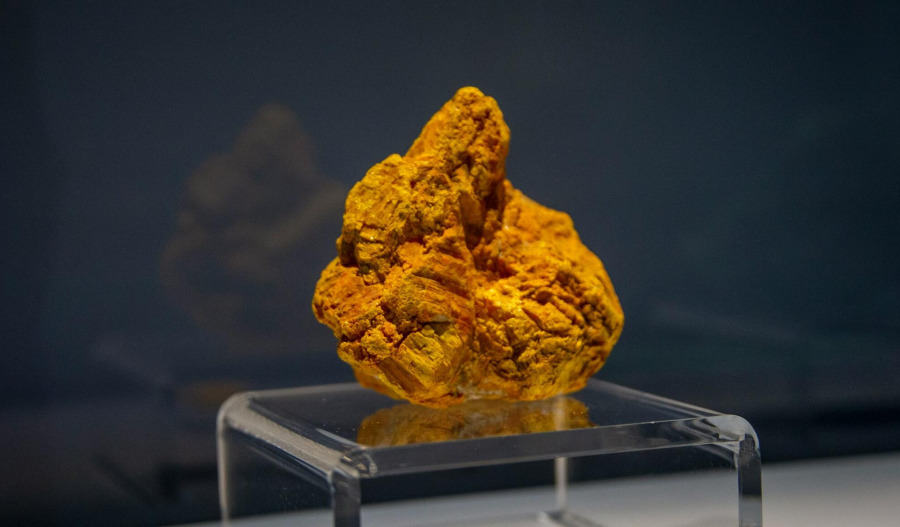Analysts and mining executives now say the Pentagon's July investment in rare earths producer MP Materials could serve as a blueprint for interventions in other critical element sectors like lithium, changing how Washington supports domestic extraction against Beijing's dominance.
The July arrangement made the Defense Department MP Materials' largest shareholder at 15% - for a tidy US$400 million - with a couple of caveats.
The government pays MP the difference when rare earths prices fall below US$110/kg for its neodymium-praseodymium (NdPr) oxide, but carves out 30% of the upside when values exceed that threshold.
NdPr prices jumped 40% in the wake of the deal.
Erm… why is that?
Glad you asked.
For decades, China has systematically dismantled any rare earth competition anywhere around the world through aggressive industrial policies.
It began in the mid-1980s, when Beijing issued export tax rebates that allowed Chinese miners to undercut foreign competitors. This basically exploded China's annual production from 8,500 tonnes in 1985 to 48,000t 10 years later.
When American producer Molycorp attempted to reopen the shuttered Mountain Pass mine in 2010, China relaxed its export quotas and flooded the market with cheap rare earths.
Molycorp couldn't make a profit from such low prices and collapsed by 2015 with US$1.7 billion in debt - and later sold for just $20.5 million.
The CCP frequently accepts losses across the rare earths supply chain (and others) to maintain artificially low prices - allowing it to monopolise the market.
"One of the biggest challenges we face is that rare earth prices are very low," Center for Strategic and International Studies director Gracelin Baskaran explains.
"A lot of that has been achieved through market manipulation by China increasing and increasing production."
The recent government intervention has been widely welcomed by the private sector.
Yet Energy Fuels CEO Mark Chalmers says the U.S. government still needs to invest in additional miners to diversify from China's extraction networks.
"I give MP credit for having the foresight and for being in the right place at the right time," Baird senior research analyst Ben Kallo told Fortune.
"I think it's surprising because I didn't believe the government would react in such a quick and forceful way.
"I think the fire is in the belly of supply-chain managers to move away from China right now."
It's been done before…
It's not new. The U.S. government has done this type of thing before, notably when it guaranteed minimum prices for agricultural commodities dating back to the Great Depression, with programs like target pricing where the government pays farmers the difference when market prices fall below guaranteed levels.
Good for the farmers, however Federal officials did have to spend nearly $42 billion of taxpayer money to support corn between 1995 and 2004 through commodity stabilisation programs.
A concentrated supply chain
China's dominance in refining has increased to 86% market share for the top three nations, up from 82% in 2020.
In December 2024, China restricted exports of gallium, germanium and antimony into the U.S.
And in a tit-for-tat reaction to Trump's tariffs the move was quickly followed by more restrictions earlier this year on tungsten, tellurium, bismuth, indium and molybdenum and on seven heavy rare earth elements.
Then in February, the Democratic Republic of Congo announced a four-month suspension of cobalt exports to curb falling prices.
More than half of energy-related elements nowadays face some form of trade controls.
Thumbs up from the experts
Benchmark sees this potentially helping normalise bifurcated pricing and perhaps enabling the formation of an ex-China rare earth price index.
"It serves as a blueprint for any market where suppressed pricing is slanting the competitive playing field against the U.S. and its allies," Benchmark Intelligence analyst Ryan Castilloux said.
Columbia University's Center on Global Energy Policy noted the "agreement signals a shift in how the U.S. approaches critical minerals, no longer viewing them as purely commercial commodities, but as strategic assets that require long-term public support”.
The Pentagon has effectively moved from being a passive buyer of components to an equity investor and anchor customer."
Seven analysts rate MP a buy and four hold, with an average 12-month price target of around $65-$70.
MP Materials is only beginning to expand into magnet production and needs to prove its capabilities in heavy rare earths separation and magnet production at a commercial scale.
This article does not constitute financial or product advice. You should consider independent advice before making financial decisions.



